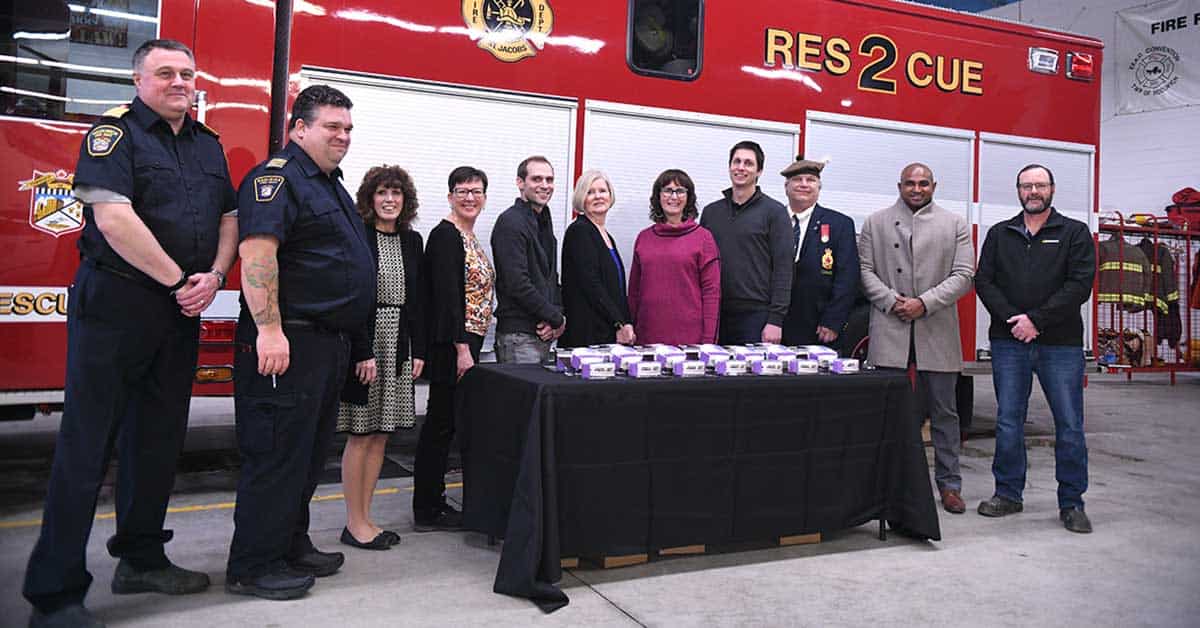The province is looking to the private sector to help deal with the backlog in the health-care system, including providing some surgeries.
The plan will be rolled out in three phases, beginning with cataract procedures.
In announcing the new approach, the Ford government said some 14,000 more cataract surgeries will be performed each year at three diagnostic centres in Windsor, Kitchener-Waterloo and Ottawa. The first phase will also include MRI and CT scans, ophthalmic surgeries and minimally invasive gynecological surgeries. With this plan, the province predicts a return to pre-pandemic levels for surgical wait lists by March.
Phase two will continue to focus on cataract surgeries, MRI, CT scans, and colonoscopy and endoscopy procedures.
“This will allow hospitals to focus their efforts and resources on more complex and high-risk surgeries,” the government said in a release Monday.
The third phase will include introducing legislation that will allow community diagnostic centres to perform more MRI and CT scanning, expand surgeries for hip and knee replacements and strengthen oversight of community surgical settings.
The plan drew immediate backlash from critics, including public sector unions and the Ontario Health Coalition. Opponents say the funding should go to established public system, arguing the move will worsen wait times at hospitals, siphoning doctors and health-care workers away to the private sector.
Michael Hurley is the president of the Ontario Council of Hospital Unions of the Canadian Union of Public Employees (CUPE). He says the provincial government has been repeatedly cutting hospital funding.
“Hospital budgets are being cut. And they have unused capacity in terms of their operating rooms, and also some of their diagnostic equipment like CAT scans and MRIs. And yet we’re talking about building new operating rooms and adding new CAT scans and MRIs in a private system. That’s concerning – costs will be higher,” he said.
Hospitals in Ontario already have thousands of vacant positions and turnover every year, he noted.
Kitchener-Conestoga MPP Mike Harris said this week the government has been investing in hospitals. He took issue with critics’ assessment. “There isn’t necessarily capacity across the system,” noting the province prepared ahead of time to make sure there is extra staffing to fulfill the plan.
“You have to look at the sum of all the pieces, right? This is just one piece of legislation, one piece of regulation. But if you look at all of the things we’ve done to try and increase the amount of health human resources that we have here in the province, whether that be doctors, nurses, personal support workers, we’ve taken steps over the last few years to be able to do that, to get us ready for this.”
Among such preparations is a plan to streamline the licensing process for people with foreign credentials, working with schools to get more students through the schooling system and getting more people enrolled, he pointed out.
Last year, the province announced an expansion of undergraduate seats and postgraduate positions for all medical schools in the province, as well as a new school of medicine in Brampton at the Toronto Metropolitan University (formerly Ryerson University).
Rosslyn Bentley, executive director of the Woolwich Community Health Centre, says she welcomes efforts to address the province’s surgical backlog, though she is conscious the issue is often a lack of staff.
“As the private sector increases staffing to meet this new demand, they will have to recruit staff from somewhere. It’s not just surgeons and specialist nurses but all the ancillary roles such as lab tech, therapists and admin support who may move from public organizations to do this work,” she said.
Health care union representatives say private clinics often charge patients much more than they should. In a release, Natalie Mehra, executive director of the Ontario Health Coalition, said that for-profit clinics in the province charge patients thousands of dollars for surgeries and “routinely upsell medically unneeded services to elderly patients. They pressure and manipulate patients into paying hundreds or thousands of dollars that they should never have to pay in our public health system.”
Harris responded by pointing out the concept is present throughout all of healthcare.
“This is not uncommon, it’s not something that is new. If you go to a hospital, and you are having a cataract surgery, there are other products that are not covered by OHIP that they do offer as well. If you go to your doctor or your local pharmacy, you often have a choice between a name-brand medication, or the generic version. If you’re at a hospital, and you need a wheelchair, OK, we’ll cover your basic needs with a wheelchair. But if you want something that’s got all the bells and whistles, it’ll be offered to you, and you can make a choice whether you want to go ahead and spend that extra cost.
“So for people to say that this is new, and that it’s unscrupulous, these are things that are already occurring. It’s about choice. If you don’t want to pay an expense out of pocket, you want what is covered by OHIP, you will have that option. If you’re in a place to be able to make other choices, then you have the opportunity to do that as well.”
Critics are also worried that this plan indicates a move toward privatization of Ontario’s health-care system, with Harris noting such a system is already in place in many provinces in Canada, and elsewhere around the world.
Hurley argues there is a slightly higher death rate at private operating rooms because in case of problems during the procedure, patients need to be transported to hospital rather than already being in one, increasing the risk factor.
He also says that although this mix of public and private is prevalent elsewhere, the public healthcare system is the most efficient.
Bentley said she doesn’t believe the move is necessarily a step toward wholesale privatization of the province’s health care.
“Many developed countries have a blended public and private system, so this step at the Ontario provincial level does not necessarily mean the end of the Canada Health Act and a public system in itself,” she said. “However as a community health centre we would emphasize the importance of investing in a comprehensive health-care system as the most equitable way to provide care. Effective health promotion and prevention, promoting good public health, leads to fewer people needing some of this care in the first place – an even more important long-term goal.”
Harris said that there will be a process for private facilities to be licensed, including a request for proposals, a screening process and a check-in process to make sure the facility operators are fulfilling their obligations. He stressed Ontario will never move to an American-style health care system.
“I’ll be point blank with it. If you’re going in for a procedure that is covered by Ontario’s Health Insurance Program, you will not be billed for it. You’ll go in, just as if you were going into a hospital or a family doctor, or a pharmacy – depending on what it is that you’re doing or have done in the past. Just like you would, you show your OHIP card and you will not be charged out of pocket.”
Critics likened that promise to Premier Doug Ford’s pledge not to touch the Greenbelt.
“When we look at our commitment to the Greenbelt, we are adding land to the Greenbelt, we are growing the Greenbelt. When we look at what you could say has been taken out, or the parts that are going to be used for development, these are pieces of land that are already adjacent to communities, these are pieces of land that are already serviced or easily serviceable. And will give an opportunity for people to be able to own an affordable home,” said Harris.
“When you look at what’s happening with health care, again, the status quo isn’t working. And you’ve heard the premier, you’ve heard the minister of health saying that we need to be innovative, we need to look at new ways of thinking. This is something that’s already been done across other jurisdictions. … This is about outcomes for people.”









